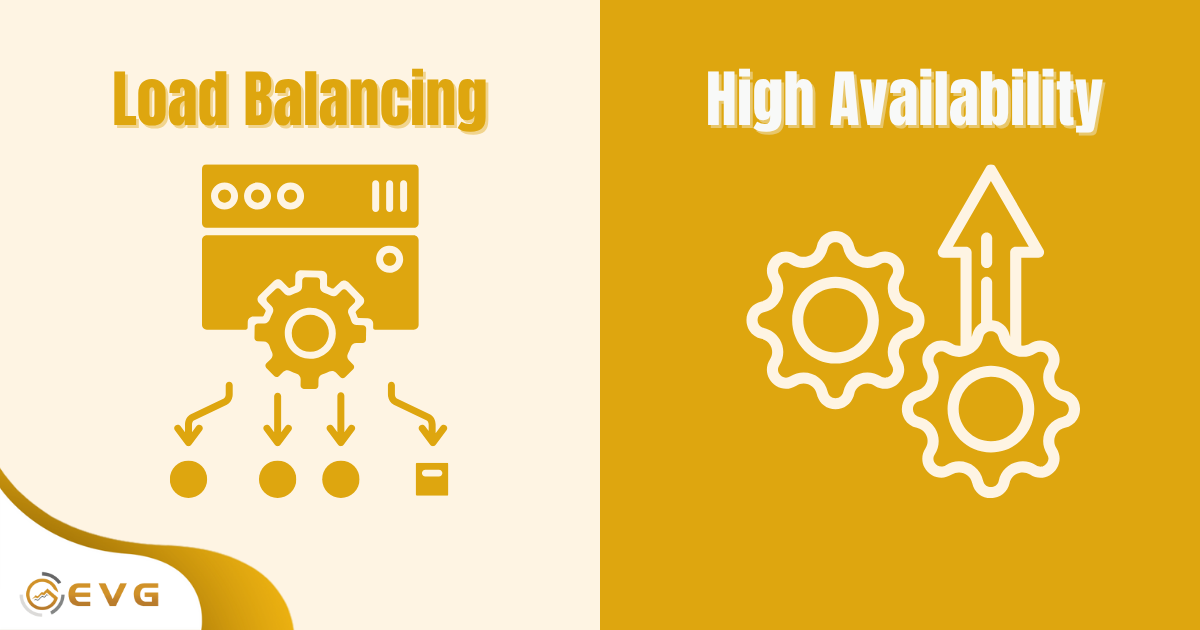
 11:54
31/05/2025
11:54
31/05/2025

Especially during live events that may draw hundreds of thousands to millions of concurrent users, any disruption—be it downtime or high latency—can severely impact user experience, brand reputation, and direct revenue from ads or in-stream purchases.
In this context, Load Balancing and High Availability (HA) are no longer optional technical features but fundamental architectural pillars in large-scale live streaming systems. These mechanisms enable enterprises to maintain service stability, ensure dynamic scalability, and enhance system resilience against hardware failures, cyberattacks, or software errors.
A Load Balancer is an intermediary component between the client and the backend, tasked with intelligently distributing incoming traffic (requests) across multiple processing nodes—commonly servers or containers. In a live streaming system, these nodes may include media servers, transcoding engines, CDN edge nodes, or backend processors for interactive event data.
Beyond avoiding server overloads, load balancers are instrumental in enabling horizontal scalability, improving fault tolerance, and optimizing latency via proximity-aware routing.
Modern live streaming systems typically integrate a variety of load balancing algorithms tailored to the workload characteristics, such as:
Round Robin: Cycles through nodes evenly—best for homogeneous environments where processing capacities are equal.
Least Connections: Routes traffic to the node with the fewest active connections—ideal for long-lived sessions such as livestreams.
Weighted Load Balancing: Allocates traffic based on node capacity—for instance, a server with twice the resources receives twice the load.
IP Hashing: Assigns clients to specific nodes based on IP—useful for maintaining session consistency in stateful environments.
In cloud-native environments such as Kubernetes, tools like Ingress Controllers (e.g., NGINX, HAProxy, Envoy) and service meshes (e.g., Istio, Linkerd) offer detailed and automated traffic orchestration.
High Availability (HA) refers to a system design principle aimed at maintaining uninterrupted operations, even in the face of partial failures. In live streaming—particularly for real-time critical events like sports, concerts, or auctions—even a few seconds of downtime can cause severe technical and commercial losses.
True HA involves more than just resource redundancy. It requires seamless integration of multi-layered redundancy, continuous health monitoring, real-time failover mechanisms, and auto-scaling capabilities, all within a multi-region, multi-zone architecture.
A robust HA architecture typically includes:
Clustered Media Servers: Redundant nodes ready to take over immediately, ensuring continuity of streaming even if one node fails.
Geo-redundant CDN & Edge Nodes: Edge infrastructure distributed across regions to optimize delivery and offer regional fallback.
Database Replication (Active-Active or Active-Passive): Replicated databases (e.g., Redis, Cassandra, PostgreSQL) ensure session, scheduling, and payment data is preserved.
Service Discovery and Health Checks: Tools like Consul, etcd, AWS Route53, or GCP Health Checks monitor node health and update routing dynamically.

A large-scale livestream system only functions effectively when Load Balancing and High Availability are co-designed into a tiered architecture, such as:
Ingest Layer: Load Balancer routes incoming push streams (from OBS, IP Cameras) to fault-tolerant media entry points.
Processing Layer: Auto-scalable transcoding nodes handle growing viewer counts, with HA preventing service degradation during encoding server failures.
Delivery Layer: CDN edge nodes integrated with smart load balancing and regional failover (e.g., switching from Singapore to Tokyo if congestion occurs).
When deployed on platforms like EVG Cloud, features like Auto Load Balancer Scaling, Cross-Region HA Routing, and Real-time Performance Analytics empower businesses to react instantly to anomalies and proactively forecast, rebalance, and optimize infrastructure in real time.
Building a flexible, resilient, and scalable architecture for livestreaming yields long-term strategic advantages, including:
Automatic failover ensures seamless operations even when individual nodes fail. This protects the full broadcast pipeline—from input to processing to delivery—ensuring continuous user experience, brand credibility, and uninterrupted revenue generation.
Using dynamic configurations or traffic-aware algorithms (e.g., Weighted, Least Connections), systems scale linearly during traffic spikes—such as flash sales or live concerts—avoiding overload while minimizing resource waste.
By combining multi-region HA with CDNs and regional load balancers, users are routed to the nearest, best-performing edge node, reducing latency and improving stream quality—even over low-bandwidth connections.
HA architecture allows for rapid isolation and recovery during DDoS attacks, while load balancers can incorporate additional layers of protection such as rate limiting, WAF integration, and IP filtering to prevent unauthorized access.
Integrated with tools such as proprietary dashboards, this architecture enables granular monitoring of KPIs (e.g., concurrent users, average bitrate, frame drop rate), allowing proactive tuning, performance optimization, and accurate demand forecasting.
At EVG Cloud, we deliver a comprehensive cloud-native livestream infrastructure, engineered with microservices and geo-distributed HA architecture. Our solution empowers clients to deploy streaming services that are stable, scalable, and future-ready.
EVG Cloud maintains server clusters in key global regions, interconnected via high-speed backbone networks. This supports Geo Load Balancing and Edge Node Redundancy, delivering optimal speed and minimal latency worldwide.
Using AI-driven load prediction, EVG’s Auto-Scaling Load Balancer anticipates spikes and proactively allocates resources—such as spinning up new media nodes or adding CDN edge servers—ensuring uninterrupted user experience.
Our HA modules enable real-time routing switches and cluster fallback within seconds of failure detection—no manual intervention needed.
EVG supports protocols like HLS, DASH, RTMP, and SRT, and offers dynamic transcoding per device and bandwidth. Users enjoy optimal quality across conditions, from Full HD to 4K.
Through an intuitive dashboard, clients can track every metric—connections, media server load, stream quality, and error alerts—enabling proactive system governance and post-event analytics.
Live streaming has evolved into a core strategy for digital communication and commerce. Investing in a Load Balancing and High Availability architecture is a non-negotiable foundation for sustainable and successful operation. Organizations with resilient infrastructure—capable of self-healing, dynamic load allocation, and limitless scaling—will gain decisive competitive advantages in the global digital content race.
EVG Cloud offers a turnkey streaming solution with cloud-native modules, auto-scaling capabilities, distributed load balancing, and multi-layered security—fit for startups and enterprise broadcasters alike.
Contact EVG Cloud’s technical team now at (+84) 968 206 168 to receive tailored advice and experience the most reliable, flexible, and high-performance live streaming solution for your organization.

 11:54
31/05/2025
11:54
31/05/2025

 11:54
31/05/2025
11:54
31/05/2025

 11:54
31/05/2025
11:54
31/05/2025